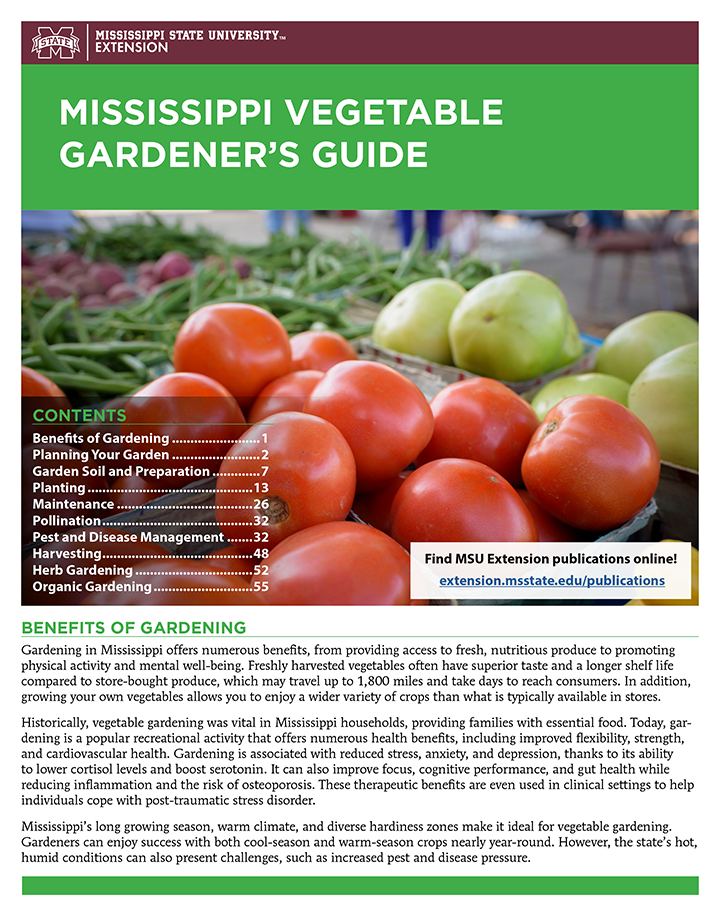Mississippi Vegetable Gardener's Guide
 Download the updated Mississippi Vegetable Gardener's Guide, revised in 2025! The full PDF is above.
Download the updated Mississippi Vegetable Gardener's Guide, revised in 2025! The full PDF is above.
Gardening in Mississippi offers numerous benefits, from providing access to fresh, nutritious produce to promoting physical activity and mental well-being. Freshly harvested vegetables often have superior taste and a longer shelf life compared to store-bought produce, which may travel up to 1,800 miles and take days to reach consumers. In addition, growing your own vegetables allows you to enjoy a wider variety of crops than what is typically available in stores.
Historically, vegetable gardening was vital in Mississippi households, providing families with essential food. Today, gardening is a popular recreational activity that offers numerous health benefits, including improved flexibility, strength, and cardiovascular health. Gardening is associated with reduced stress, anxiety, and depression, thanks to its ability to lower cortisol levels and boost serotonin. It can also improve focus, cognitive performance, and gut health while reducing inflammation and the risk of osteoporosis. These therapeutic benefits are even used in clinical settings to help individuals cope with post-traumatic stress disorder.
Mississippi’s long growing season, warm climate, and diverse hardiness zones make it ideal for vegetable gardening. Gardeners can enjoy success with both cool-season and warm-season crops nearly year-round. However, the state’s hot, humid conditions can also present challenges, such as increased pest and disease pressure.
This guide provides specific recommendations to address these challenges and maximize your garden’s productivity. It is organized into sections that cover each stage of gardening, from planning and soil preparation to pest management and harvesting. You can read it cover to cover for an in-depth understanding or use it as a quick reference to find information on specific topics.
Publication 3616 (POD-06-25)
Revised by Shaun Broderick, PhD, Associate Extension/Research Professor, Truck Crops Branch Experiment Station; Jeff Wilson, PhD, Assistant Professor, North Mississippi Research and Extension Center; Rebecca Melanson, PhD, Associate Extension Professor, Central Mississippi Research and Extension Center; and Pawel Orlinski, Instructor I, Plant and Soil Sciences; from a previous edition by Rick Snyder, PhD, Extension/Research Professor (retired), Shaun Broderick, Jeff Wilson, Blake Layton, PhD, Extension Professor (retired), Entomology, and Rebecca Melanson.
The Mississippi State University Extension Service is working to ensure all web content is accessible to all users. If you need assistance accessing any of our content, please email the webteam or call 662-325-2262.




